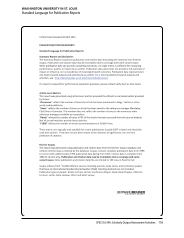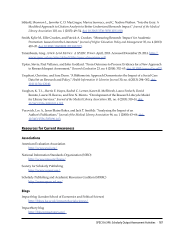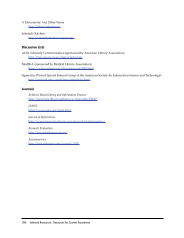160 · Representative Documents: Assessment Reports
WASHINGTON UNIVERSITY IN ST. LOUIS
Standard Language for Publication Reports
Content last reviewed 28 April 2015
What is the h index?
The h index was proposed by J.E. Hirsch in 2005 and published in the Proceedings of the National
Academy of Sciences of the United States of America:
http://www.ncbi.nlm.nih.gov/pmc/articles/PMC1283832/. The h index is a quantitative metric based on
analysis of publication data using publications and citations to provide “an estimate of the importance,
significance, and broad impact of a scientist’s cumulative research contributions.” According to Hirsch,
the h index is defined as: "A scientist has index h if h of his or her Np papers have at least h citations each
and the other (Np – h) papers have ≤h citations each.”
As an example, an h index of 10 means that among all publications by one author, 10 of these
publications have received at least 10 citations each.
For Younger Investigators:
An alternative metric to consider is the m value.
The m value is a correction of the h index for time with y = number of years since the first publication:
(m = h/y). According to Hirsch, m is an “indicator of the successfulness of a scientist” and can be used to
compare scientists of different seniority. The m value can be seen as an indicator for “scientific quality”
with the advantage (as compared to the h index) that the m value is corrected for age.
Note that the h index calculation from Scopus only uses documents published after 1995.
The h index varies among resources including Google Scholar depending on the publication and
citation data included in the calculation of the h index.




























































































































































































